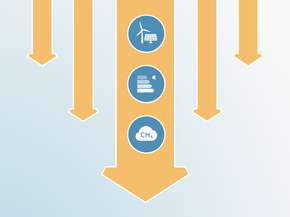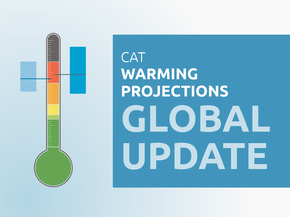Assumptions
Global Warming Potentials
Previous assessments of the Climate Action Tracker used the global warming potentials (GWPs) of the IPCC’s second assessment report (SAR). Most Annex I National Inventories and NDCs, including New Zealand’s, are based on the more up to date GWPs of the fourth assessment report (AR4). For this assessment we have updated all the figures and time series to AR4 GWP. Due to the large contribution of emissions from the agriculture sector, a high proportion of New Zealand’s emissions are in the form of methane and nitrous oxide. Under AR4 GWPs, CH4 and N2O contributed 43% and 11% respectively of New Zealand’s total Annex A GHG emissions in 2005.
Historical emissions
Historical data were obtained from the UNFCCC GHG inventory (UNFCCC, 2018).
Pledge
Target emissions levels were calculated from the national inventory data published in the most recent CRF data submitted to the UNFCCC. The target for 2020 is calculated using the information provided in the latest net position update (April 2018), which confirmed that New Zealand is projected to meet its unconditional target to reduce emissions to 5% below 1990 levels by 2020 with a surplus of 92.4 million units, by making use of 31.3 million available units from CP1 (out of a total surplus of 123.7 million units) to meet its 2020 target, where one unit represents one tonne of greenhouse gas emissions as carbon dioxide equivalent (tCO2eq) (Ministry for the Environment, 2018a).
When describing its NDC target, New Zealand states that the 30% reduction below 2005 levels is equivalent to a reduction of 11% from 1990 levels. This equivalence is only possible if gross emissions (excluding LULUCF) are used in the base years (1990 and 2005). For the target year however, New Zealand clarifies that its target is economy wide and covers all sectors, including LULUCF. This suggested approach that excludes LULUCF emissions in the base year but includes them in the target year is known as “gross-net” approach. Given that the accounting rules that will be used under the Paris Agreement have not yet been defined and therefore the legal basis upon which New Zealand is seeking to rely upon such approach is unclear, for the 2030 target, we have estimated the emissions levels using both a gross-net and a net-net approach.
For the 2030 target, we have additionally estimated the potential impact of the carryover of Kyoto Protocol forestry activity credits in the CP1 and CP2. For this, we have used the numbers provided in the latest net position update for CP1 and estimated the surplus that would result in CP2 under current policy projections. We assume that the cumulative surplus credits would be distributed between 2020 and 2030 using a linear extrapolation.
Current policy projections
The current policy projections are based on the “with measures” scenario of the 3nd biennial report of New Zealand. The ‘with measures’ scenario includes the effects of key quantifiable policies and measures currently implemented. Specifically, it includes the New Zealand Emissions Trading Scheme; ENERGYWISE; the Warm Up New Zealand: Healthy Homes 2013–2018 programme; the Efficient Products Programme; the Large Energy User Programme; Commercial buildings programmes; the Vehicle fuel economy labelling; the Permanent Forest Sink Initiative; the Erosion Control Funding Programme; the Sustainable Land Management Hill Country Erosion Programme; the Afforestation Grant Scheme; and the Waste Minimisation Act 2008.
Further analysis
Latest publications
Stay informed
Subscribe to our newsletter




